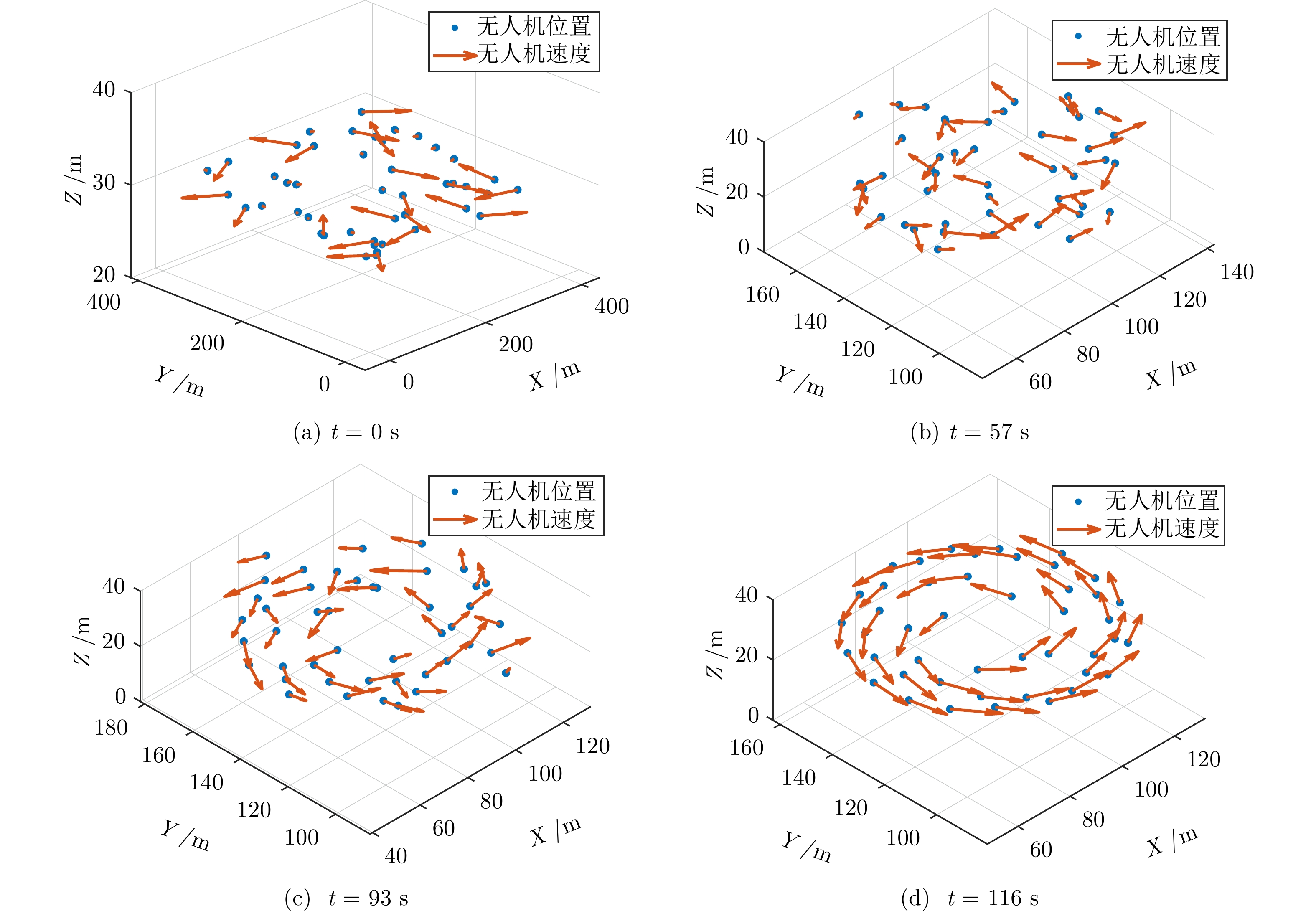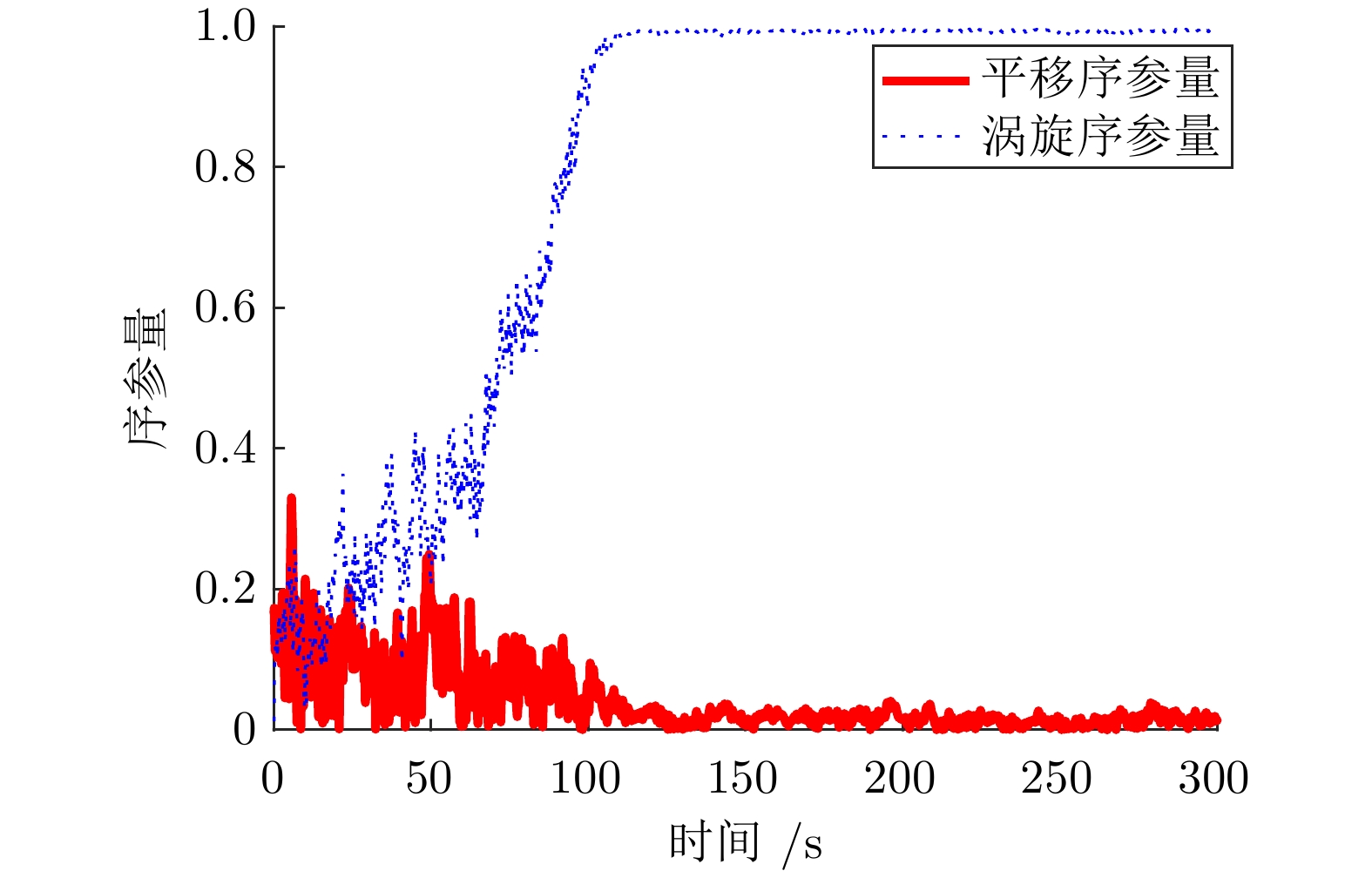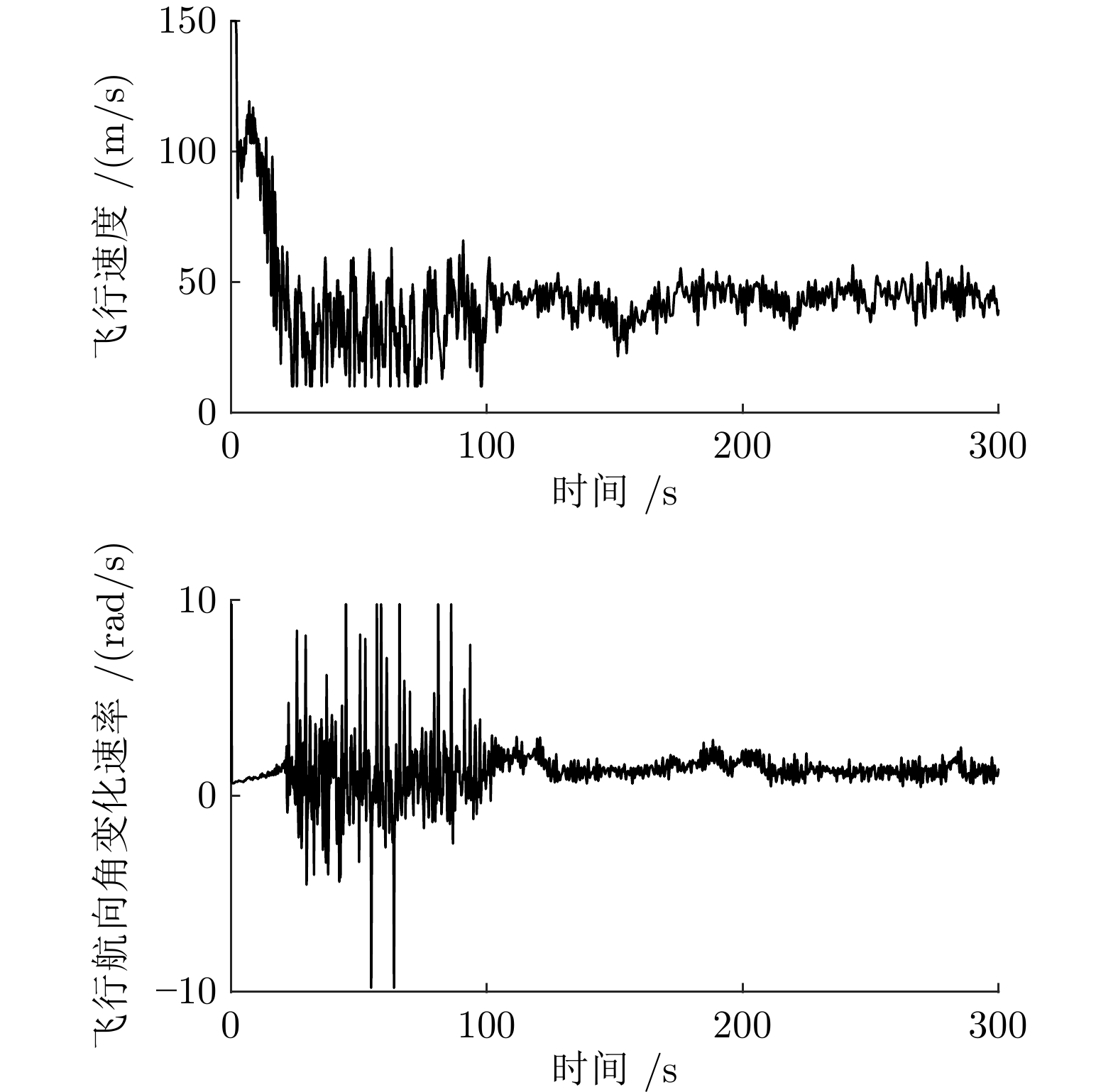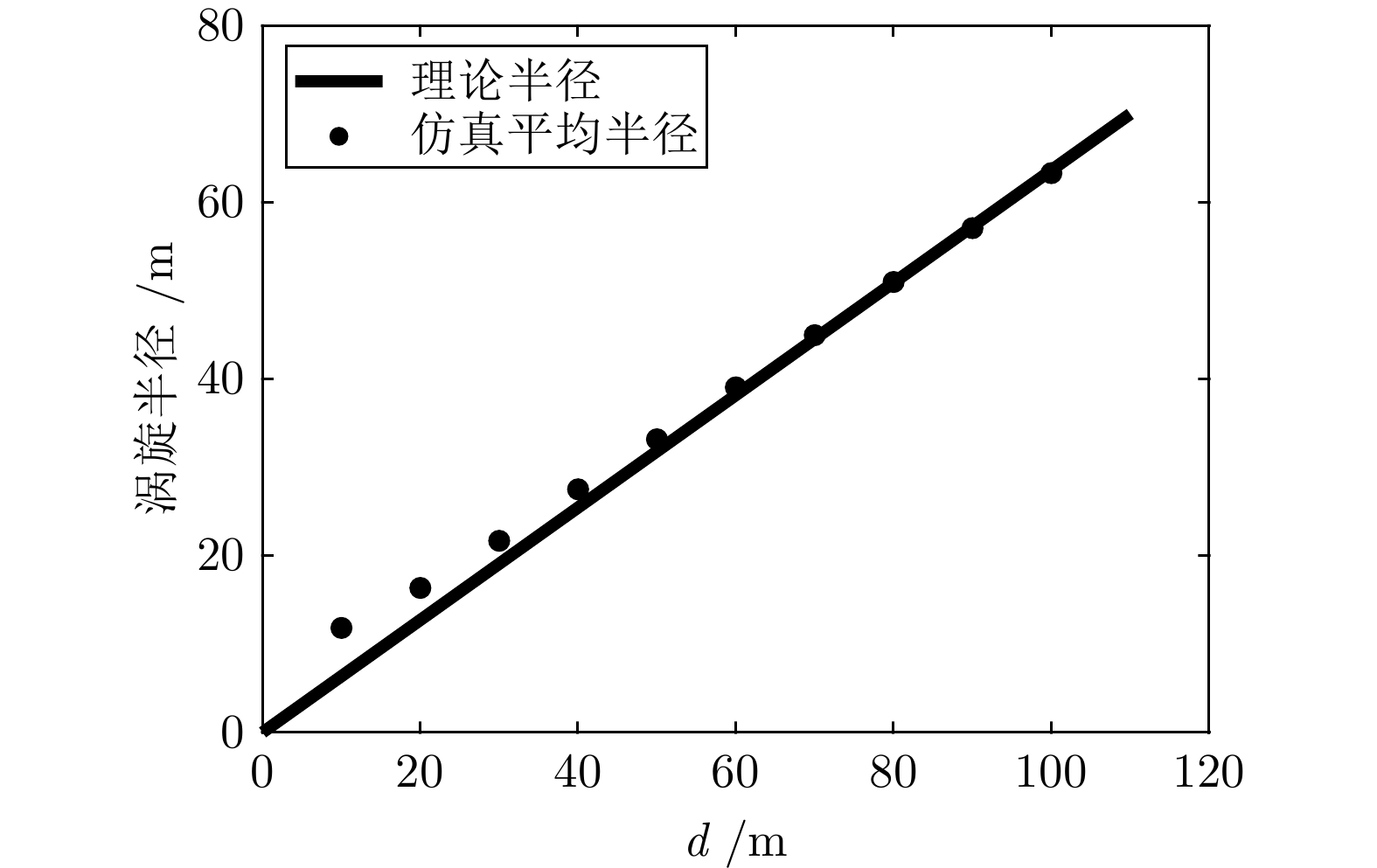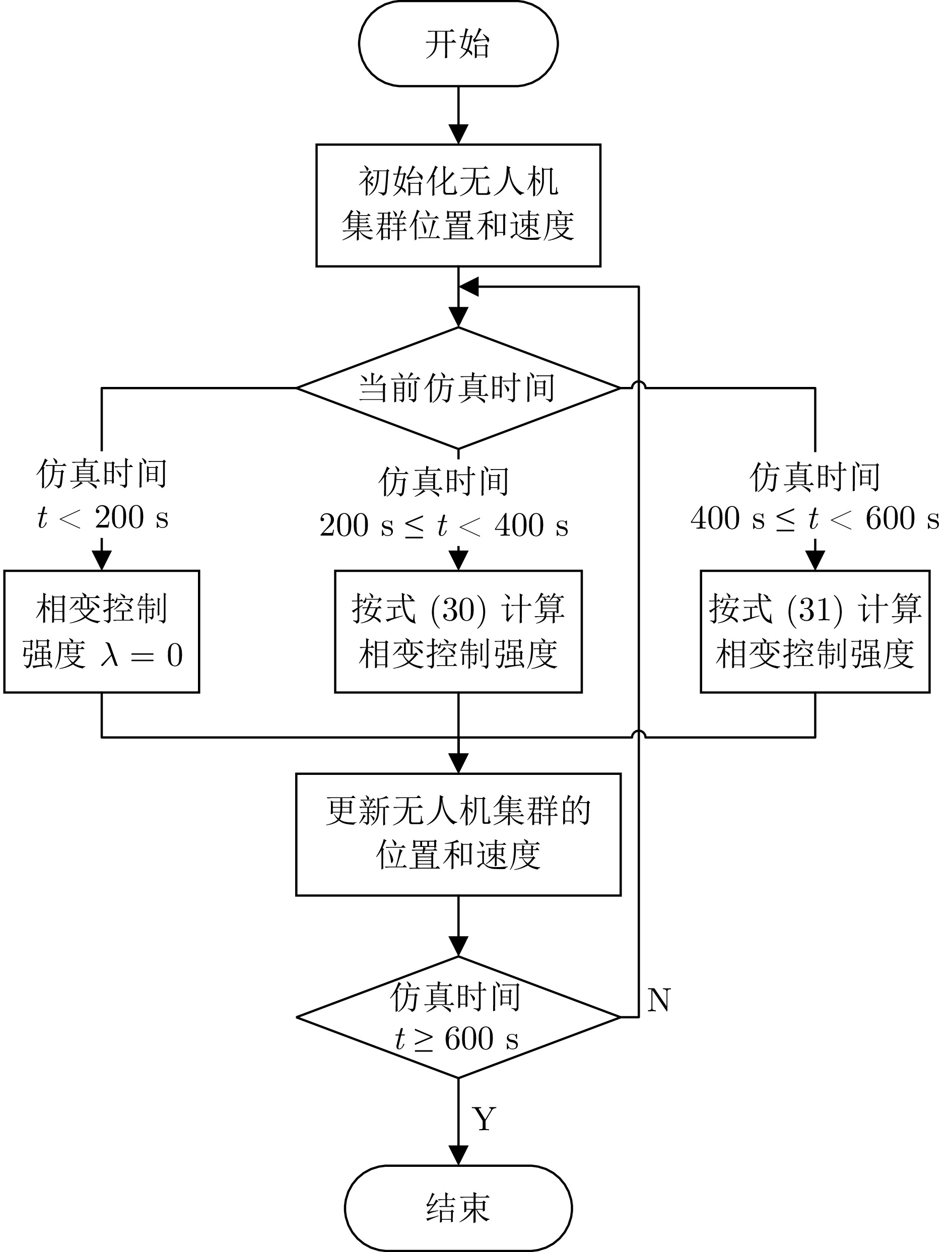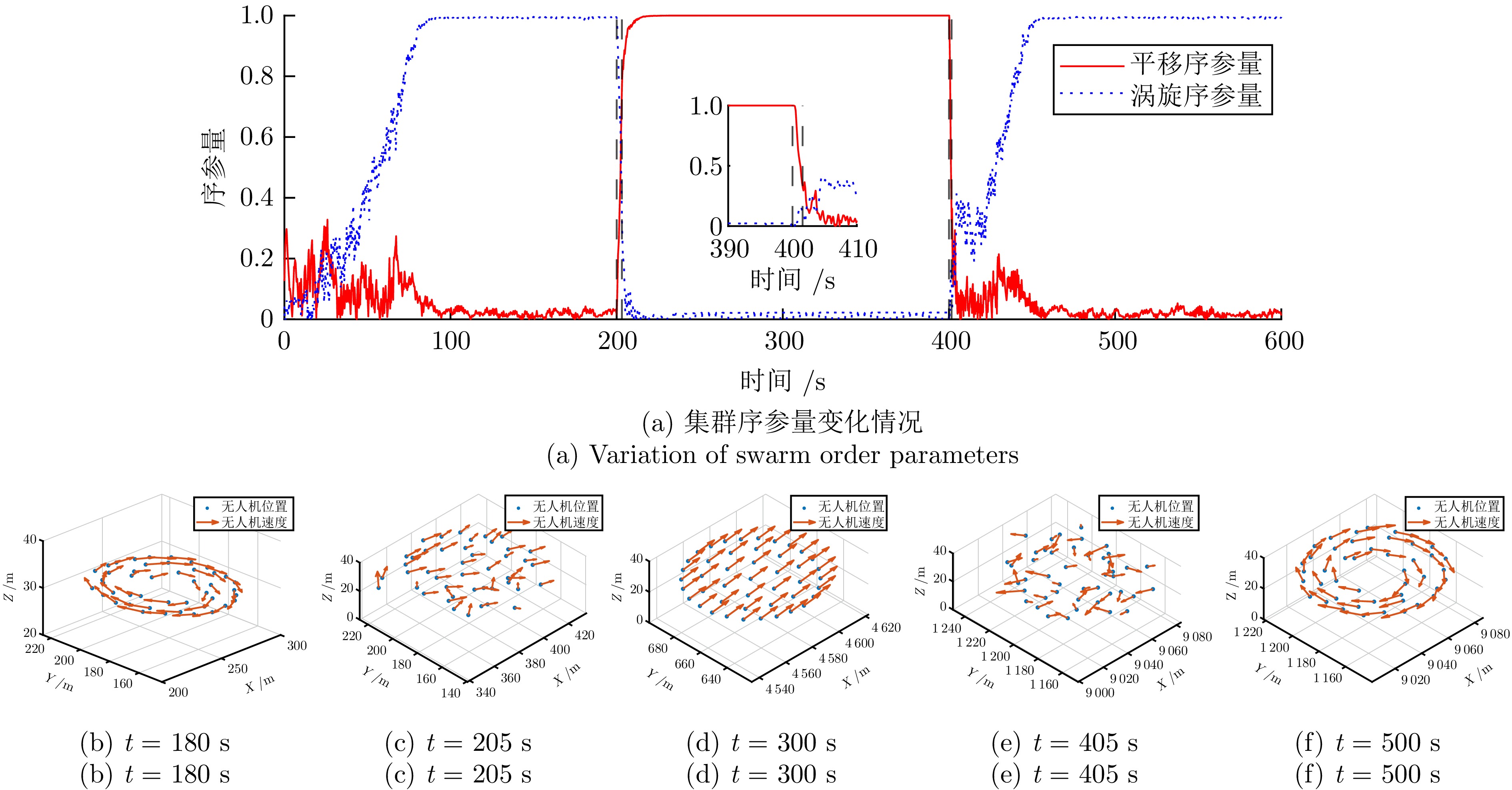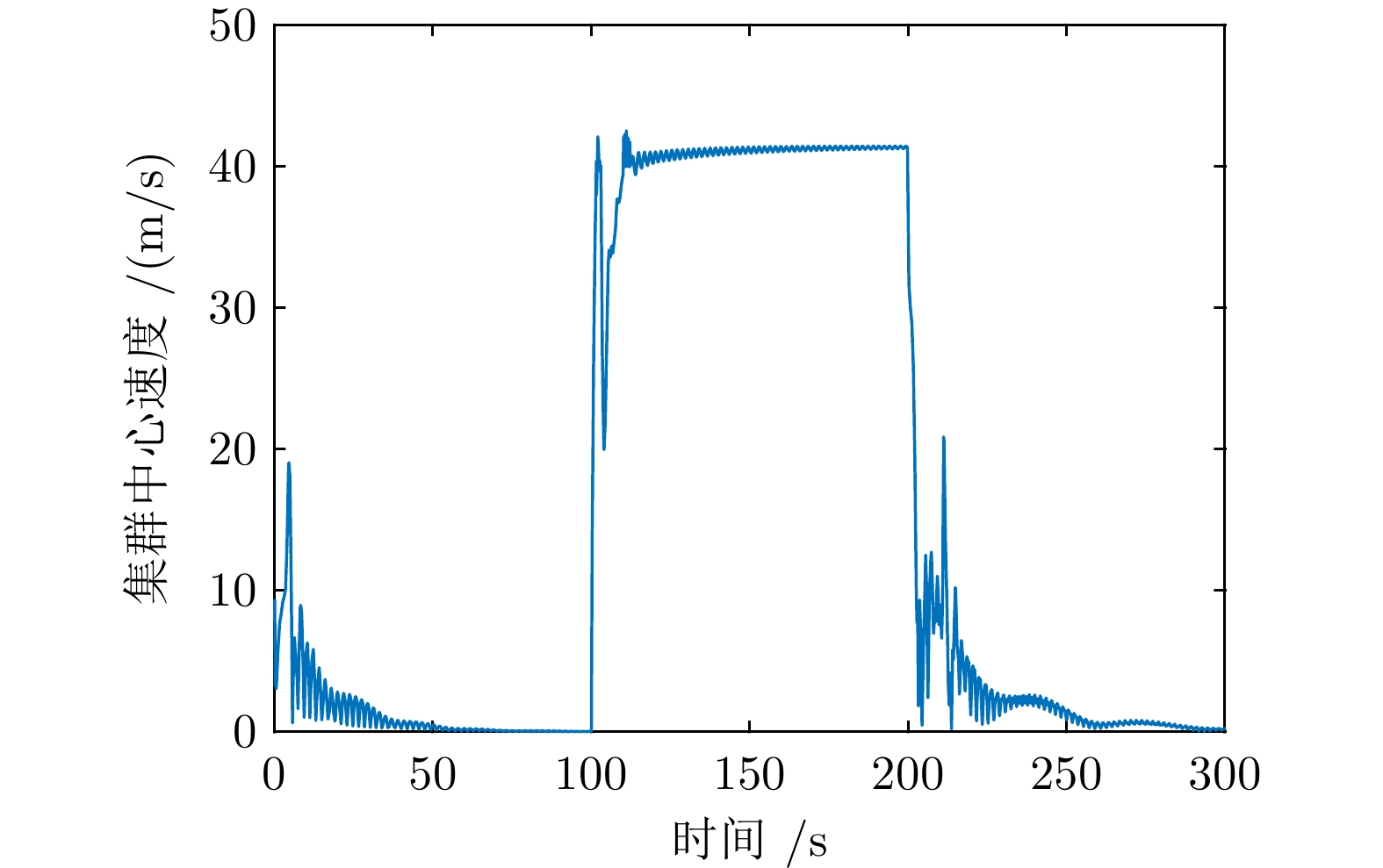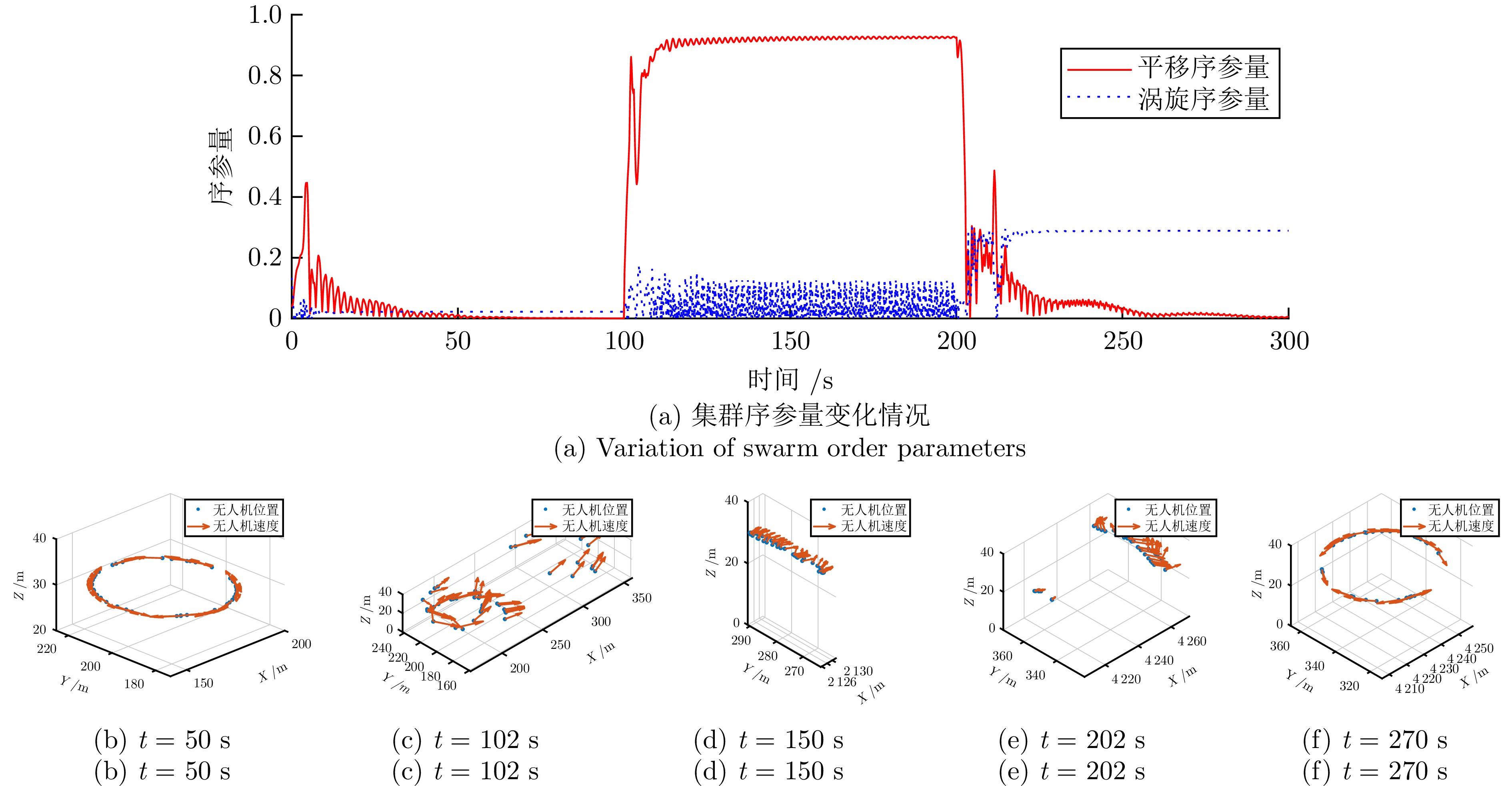|
[1]
|
蔡运颂, 许璟, 牛玉刚. 基于自适应多尺度超螺旋算法的无人机集群姿态同步控制. 自动化学报, 2023, 49(8): 1656−1666Cai Yun-Song, Xu Jing, Niu Yu-Gang. Attitude consensus control of UAV swarm based on adaptive multi-scale super-twisting algorithm. Acta Automatica Sinica, 2023, 49(8): 1656−1666
|
|
[2]
|
王峰, 黄子路, 韩孟臣, 邢立宁, 王凌. 基于KnCMPSO算法的异构无人机协同多任务分配. 自动化学报, 2023, 49(2): 399−414Wang Feng, Huang Zi-Lu, Han Meng-Chen, Xing Li-Ning, Wang Ling. A knee point based coevolution multi-objective particle swarm optimization algorithm for heterogeneous UAV cooperative multi-task allocation. Acta Automatica Sinica, 2023, 49(2): 399−414
|
|
[3]
|
Luo L B, Wang X Y, Ma J F, Ong Y S. GrpAvoid: Multigroup collision-avoidance control and optimization for UAV swarm. IEEE Transactions on Cybernetics, 2023, 53(3): 1776−1789 doi: 10.1109/TCYB.2021.3132044
|
|
[4]
|
韦宸越, 何明, 韩伟, 徐昕, 高宏. 无人机集群弹性评估及重构技术研究. 计算机工程与应用, 2024, 60(15): 1−10 doi: 10.3778/j.issn.1002-8331.2401-0452Wei Chen-Yue, He Ming, Han Wei, Xu Xin, Gao Hong. Research on unmanned aerial vehicle swarm resilience assessment and reconfiguration technology. Computer Engineering and Applications, 2024, 60(15): 1−10 doi: 10.3778/j.issn.1002-8331.2401-0452
|
|
[5]
|
何明, 陈浩天, 韩伟, 邓成, 段海滨. 无人机仿鸟群协同控制发展现状及关键技术. 航空学报, 2024, 45(20): Article No. 029946 doi: 10.7527/S1000-6893.2024.29946He Ming, Chen Hao-Tian, Han Wei, Deng Cheng, Duan Hai-Bin. Development status and key technologies of cooperative control of bird-inspired UAV swarms. Acta Aeronautica et Astronautica Sinica, 2024, 45(20): Article No. 029946 doi: 10.7527/S1000-6893.2024.29946
|
|
[6]
|
Xue T T, Li X, Grassberger P, Chen L. Swarming transitions in hierarchical societies. Physical Review Research, 2020, 2(4): Article No. 042017
|
|
[7]
|
Hindes J, Edwards V, Kasraie K S, Stantchev G, Schwartz I B. Swarm shedding in networks of self-propelled agents. Scientific Reports, 2021, 11(1): Article No. 13544 doi: 10.1038/s41598-021-92748-1
|
|
[8]
|
Cheng Z, Chen Z Y, Vicsek T, Chen D X, Zhang H T. Pattern phase transitions of self-propelled particles: Gases, crystals, liquids, and mills. New Journal of Physics, 2016, 18: Article No. 103005 doi: 10.1088/1367-2630/18/10/103005
|
|
[9]
|
Mier-y-Teran-Romero L, Forgoston E, Schwartz I B. Coherent pattern prediction in swarms of delay-coupled agents. IEEE Transactions on Robotics, 2012, 28(5): 1034−1044 doi: 10.1109/TRO.2012.2198511
|
|
[10]
|
Duan H B, Zhang X Y. Phase transition of vortexlike self-propelled particles induced by a hostile particle. Physical Review E, 2015, 92(1): Article No. 012701
|
|
[11]
|
Hindes J, Edwards V, Hsieh M A, Schwartz I B. Critical transition for colliding swarms. Physical Review E, 2021, 103(6): Article No. 062602
|
|
[12]
|
Edwards V, deZonia P, Hsieh M A, Hindes J, Triandaf I, Schwartz I B. Delay induced swarm pattern bifurcations in mixed reality experiments. Chaos, 2020, 30(7): Article No. 073126
|
|
[13]
|
Lei X K, Xiang Y L, Duan M Y, Peng X G. Exploring the criticality hypothesis using programmable swarm robots with Vicsek-like interactions. Journal of the Royal Society Interface, 2023, 20(204): Article No. 20230176 doi: 10.1098/rsif.2023.0176
|
|
[14]
|
Xie H, Sun M M, Lin Z H, Chen W N, Wang L, Dong L X, et al. Reconfigurable magnetic microrobot swarm: Multimode transformation, locomotion, and manipulation. Science Robotics, 2019, 4(28): Article No. eaav8006 doi: 10.1126/scirobotics.aav8006
|
|
[15]
|
Hao Z J, Mayya S, Notomista G, Hutchinson S, Egerstedt M, Ansari A. Controlling collision-induced aggregations in a swarm of micro bristle robots. IEEE Transactions on Robotics, 2023, 39(1): 590−604 doi: 10.1109/TRO.2022.3189846
|
|
[16]
|
Guilford T, Roberts S, Biro D, Rezek I. Positional entropy during pigeon homing II: Navigational interpretation of Bayesian latent state models. Journal of Theoretical Biology, 2004, 227(1): 25−38 doi: 10.1016/j.jtbi.2003.07.003
|
|
[17]
|
Riehl C, LaPergola J B. Inclusive fitness explains behavioral diversity in a social bird. Proceedings of the National Academy of Sciences of the United States of America, 2023, 120(21): Article No. e2305610120
|
|
[18]
|
Vicsek T, Czirók A, Ben-Jacob E, Cohen I, Shochet O. Novel type of phase transition in a system of self-driven particles. Physical Review Letters, 1995, 75(6): 1226−1229 doi: 10.1103/PhysRevLett.75.1226
|
|
[19]
|
Nagy M, Ákos Z, Biro D, Vicsek T. Hierarchical group dynamics in pigeon flocks. Nature, 2010, 464(7290): 890−893 doi: 10.1038/nature08891
|
|
[20]
|
Ballerini M, Cabibbo N, Candelier R, Cavagna A, Cisbani E, Giardina I, et al. Interaction ruling animal collective behavior depends on topological rather than metric distance: Evidence from a field study. Proceedings of the National Academy of Sciences of the United States of America, 2008, 105(4): 1232−1237
|
|
[21]
|
Cavagna A, del Castello L, Giardina I, Grigera T, Jelic A, Melillo S, et al. Flocking and turning: A new model for self-organized collective motion. Journal of Statistical Physics, 2015, 158(3): 601−627 doi: 10.1007/s10955-014-1119-3
|
|
[22]
|
Ling H J, Mclvor G E, Westley J, van der Vaart K, Yin J, Vaughan R T, et al. Collective turns in jackdaw flocks: Kinematics and information transfer. Journal of the Royal Society Interface, 2019, 16(159): Article No. 20190450 doi: 10.1098/rsif.2019.0450
|
|
[23]
|
D'Orsogna M R, Chuang Y L, Bertozzi A L, Chayes L S. Self-propelled particles with soft-core interactions: Patterns, stability, and collapse. Physical Review Letters, 2006, 96(10): Article No. 104302 doi: 10.1103/PhysRevLett.96.104302
|
|
[24]
|
Wu P F, Guo W C, Ai B Q, He L. Scaling behavior of transient dynamics of vortex-like states in self-propelled particles. Physica A: Statistical Mechanics and Its Applications, 2023, 622: Article No. 128822 doi: 10.1016/j.physa.2023.128822
|
|
[25]
|
Berlinger F, Gauci M, Nagpal R. Implicit coordination for 3D underwater collective behaviors in a fish-inspired robot swarm. Science Robotics, 2021, 6(50): Article No. eabd8668 doi: 10.1126/scirobotics.abd8668
|
|
[26]
|
陈琳, 郭炳晖, 段海滨, 吕卫锋. 基于群体熵度量的无人机集群目标合围控制. 中国科学: 技术科学, 2023, 53(2): 177−186 doi: 10.1360/SST-2021-0284Chen Lin, Guo Bing-Hui, Duan Hai-Bin, Lv Wei-Feng. Target enclosing control of multiple unmanned aerial vehicles based on crowd entropy. SCIENTIA SINICA Technologica, 2023, 53(2): 177−186 doi: 10.1360/SST-2021-0284
|
|
[27]
|
Attanasi A, Cavagna A, del Castello L, Giardina I, Grigera T S, Jelić A, et al. Information transfer and behavioural inertia in starling flocks. Nature Physics, 2014, 10(9): 691−696 doi: 10.1038/nphys3035
|
|
[28]
|
Chen D X, Sun Y Z, Shao G B, Yu W W, Zhang H T, Lin W. Coordinating directional switches in pigeon flocks: The role of nonlinear interactions. Royal Society Open Science, 2021, 8(9): Article No. 210649 doi: 10.1098/rsos.210649
|
|
[29]
|
Reynolds C W. Flocks, herds and schools: A distributed behavioral model. In: Proceedings of the 14th Annual Conference on Computer Graphics and Interactive Techniques. Anaheim, USA: ACM, 1987. 25−34
|
|
[30]
|
Couzin I D, Krause J, James R, Ruxton G D, Franks N R. Collective memory and spatial sorting in animal groups. Journal of Theoretical Biology, 2002, 218(1): 1−11 doi: 10.1006/jtbi.2002.3065
|
|
[31]
|
Biro D, Sumpter D J T, Meade J, Guilford T. From compromise to leadership in pigeon homing. Current Biology, 2006, 16(21): 2123−2128 doi: 10.1016/j.cub.2006.08.087
|
|
[32]
|
Chen D X, Xu B W, Zhu T, Zhou T, Zhang H T. Anisotropic interaction rules in circular motions of pigeon flocks: An empirical study based on sparse Bayesian learning. Physical Review E, 2017, 96(2): Article No. 022411
|
|
[33]
|
何亚琦. 基于社会力模型的集群系统的调控算法 [硕士学位论文], 华南理工大学, 中国, 2023.He Ya-Qi. Control Algorithms for Social Force Model Based Swarm Systems [Master thesis], South China University of Technology, China, 2023.
|




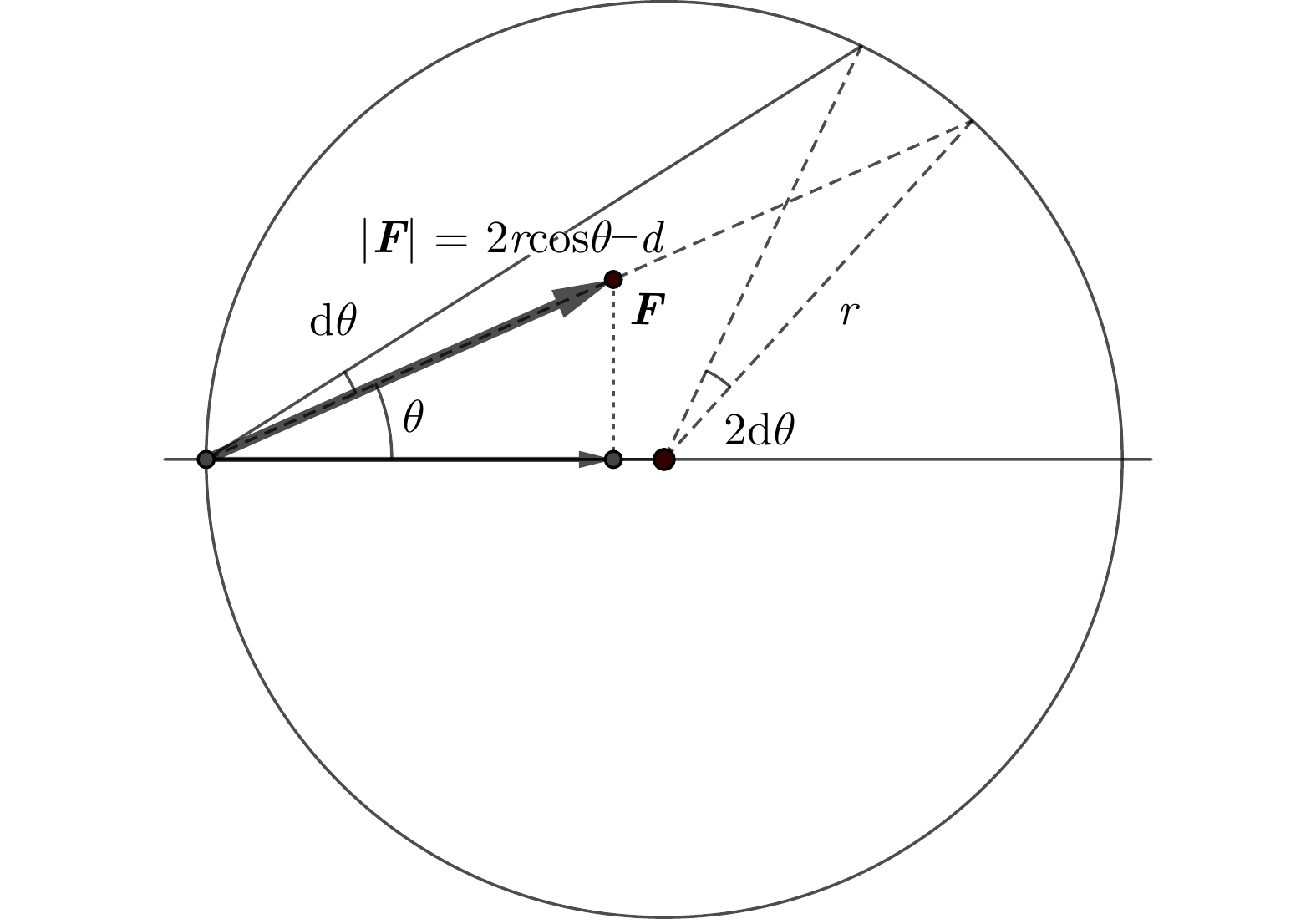
 下载:
下载:
